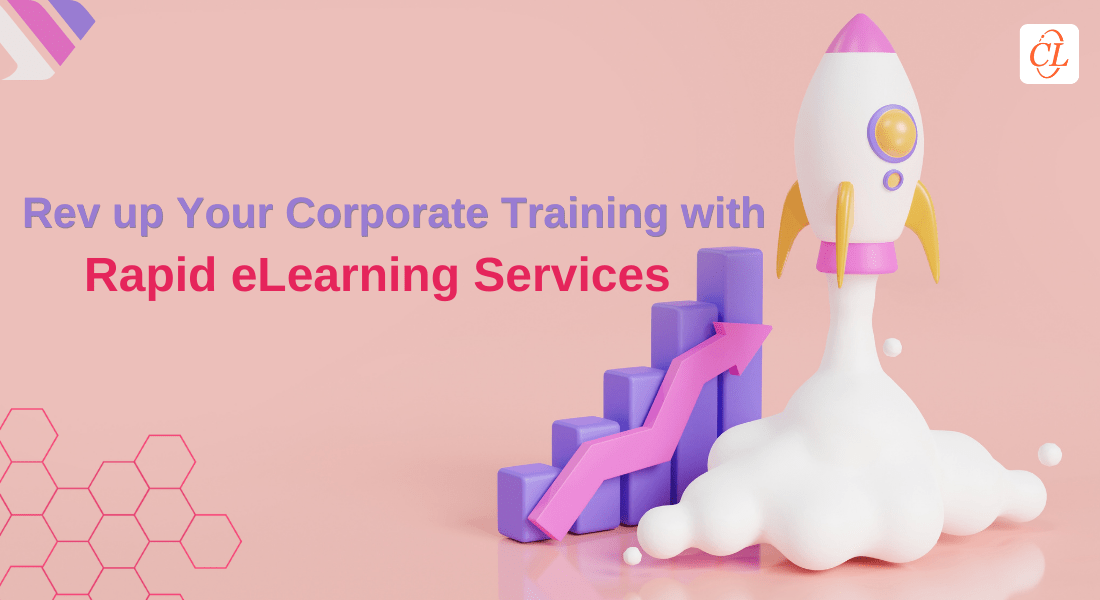Top 4 Trends in Rapid eLearning to Train the Modern Generation

Every now and then, new technology is introduced or a new trend goes viral, and the eLearning industry is no different. Organizations are always looking to train their workforce in innovative yet efficient ways, and rapid eLearning is one of the most ideal solutions to serve this purpose. Rapid eLearning is an approach to creating eLearning content quickly and efficiently, often using pre-built templates and eLearning authoring tools to streamline the development process. Read on to explore the latest trends in rapid eLearning along with a practical example of how to incorporate these trends into your training program.
Top Modern Trends in Rapid eLearning to Train Today’s Generation
Training today’s generation is pretty hard, isn’t it? Well, don’t worry! Because rapid eLearning can make it relatively easier with the help of various modern trends such as microlearning, personalized learning, gamification, and video-based learning. Read more about them below…
Top 4 Modern Trends in Rapid eLearning to Train Today’s Generation
1. Microlearning
Microlearning involves breaking down complex topics into small, bite-sized pieces of information that learners can easily digest. This approach is gaining popularity as it allows learners to quickly acquire knowledge and skills without spending too much time on lengthy courses. Instead of providing a two-hour training course on a particular software program, a microlearning approach might involve a series of 5-10 minute video tutorials that cover specific features or functions of the program. Microlearning videos are getting increasingly popular in the eLearning field due to their effectiveness and creative applications.
→ Download eBook Now: Where Does Microlearning Fit in Your Learning Strategy?
2. Personalized learning
Personalization involves tailoring eLearning content to the individual needs and preferences of each learner. This can be achieved through adaptive learning technology, which uses data and analytics to identify the strengths and weaknesses of each learner and deliver content accordingly. Nowadays, an adaptive eLearning platform such as an LXP is utilized to provide different learning paths based on the learner’s prior knowledge, skill level, and learning style. Some of the popular modern LXPs are Udemy Business, Continu, and 360Learning.
3. Gamification
Gamification involves incorporating game elements such as points, badges, leaderboards, or levels into eLearning modules to increase learner engagement, encourage learners to complete training modules and achieve learning objectives. For example, a sales training module might include a reward/incentive system where employees compete to close the most sales in a simulated scenario and this same model can be carried forward in the real world as well. Another simple example of gamification is the idea of providing a certificate or a badge for completing the training course.
4. Video-based learning
Video-based learning involves using video content to deliver eLearning content. This approach is gaining popularity as it allows learners to see and hear information presented in a dynamic and engaging way. The trend started with lengthy explainer videos but currently, short microlearning videos are the most popular and preferred formats to deliver eLearning content. Videos can either be uploaded and promoted on various social media platforms or embedded on your own website or course, as per your requirements and the convenience of learners.
A Practical Example to Illustrate These Trends in Action
Hypothetically, you are a learning and development specialist at a large retail organization. You have been tasked with developing a rapid eLearning program to train new hires on the company’s customer service policies and procedures. Here’s how you might incorporate these trends –
To get started, instead of providing a lengthy training course on customer service, you can break the content down into a series of short videos, each covering a specific topic such as handling customer complaints, greeting customers, or processing returns. Now, if a learner is already proficient in handling customer complaints, they might be directed to skip that module and move on to more advanced content. You can also include a scenario-based game where learners must navigate different customer interactions and earn points for successful outcomes or include role-play videos where actors demonstrate good and bad customer service interactions, allowing learners to analyze and learn from these scenarios.
Wrapping Up!
Rapid eLearning has a lot of benefits that can be effectively leveraged by organizations as per their training needs and business goals. If you are interested to get started with rapid eLearning, there are various things to take care of, such as the challenges you might face, the latest authoring tools’ features, the latest market trends, and a lot more. To get more information about all these aspects, here’s an amazing eBook you can download, and kickstart your rapid eLearning journey in no time.





